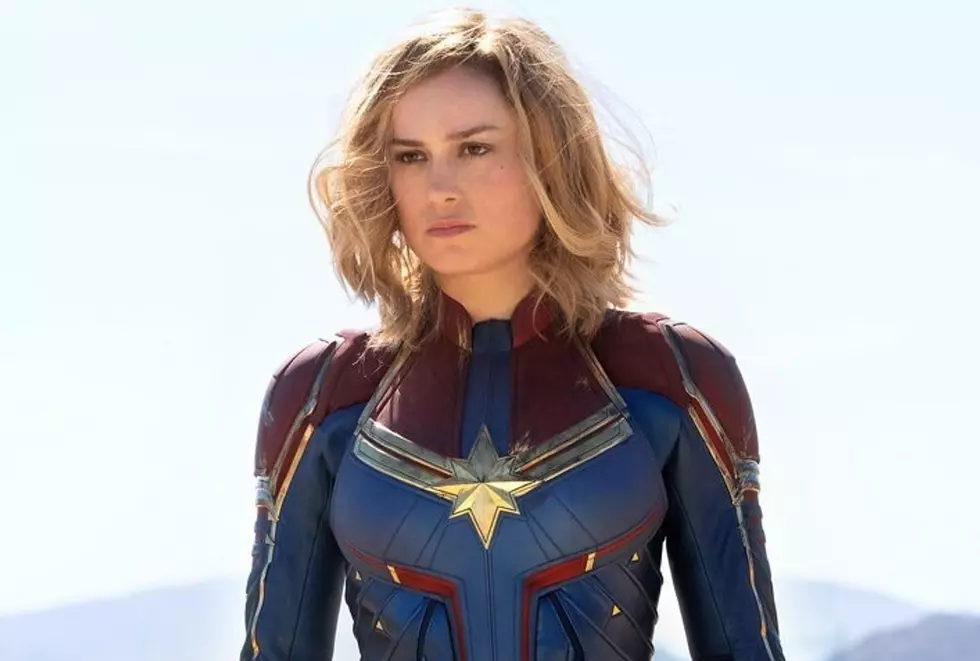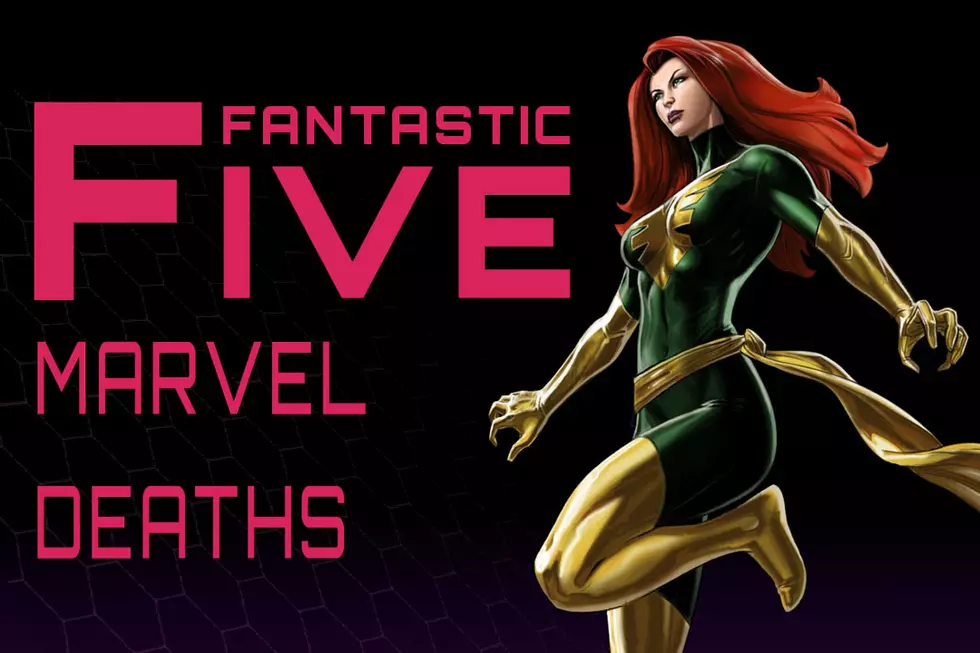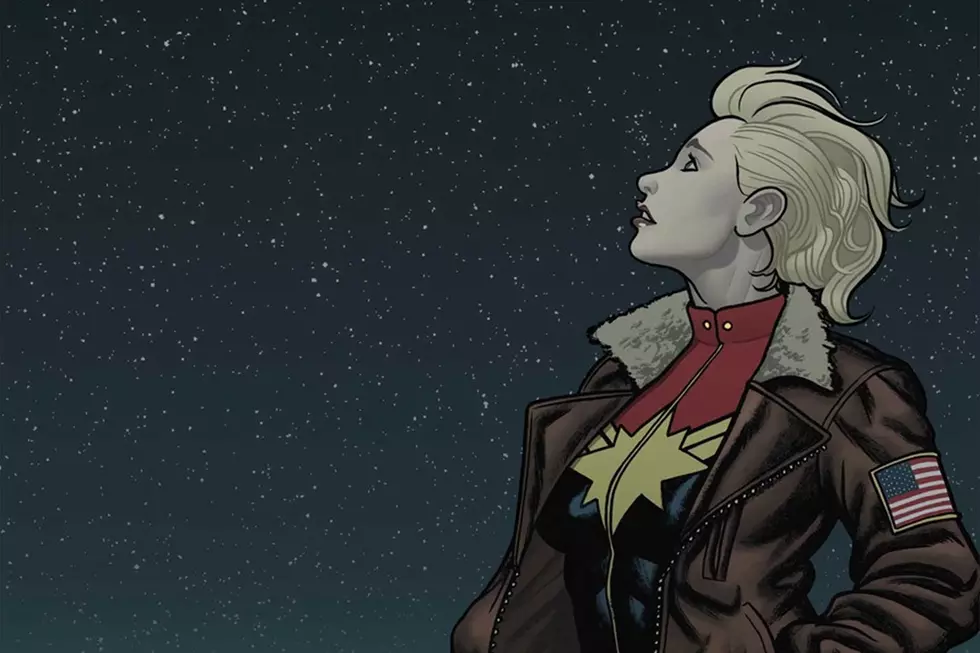![A Comic Book Retailer’s Take On The ‘All-New Number One’ Issue [Guest Editorial]](http://townsquare.media/site/622/files/2013/10/allnewnumberone.jpg?w=980&q=75)
A Comic Book Retailer’s Take On The ‘All-New Number One’ Issue [Guest Editorial]
Last week ComicsAlliance published an editorial by Matt D. Wilson's titled What Does A Number One Issue Mean? In that piece, Matt criticized American comic book publishers' reliance on the "all-new #1 issue" scheme, describing it as a "myth" with respect to creative direction and a "stunt" with respect to sales.
After reading Matt's piece, Brandon Schatz of Wizard's Comics in Edmonton penned an insightful look at the topic from the point of view of the retailer, to whom the shiny new #1 issue is also squarely aimed. It's with Schatz's gracious permission that we're publishing his words, which have been edited only slightly so as to add images, relevant links and conform to CA's style guide.
By Brandon Schatz
On Thursday I’m going to help destroy the lives of some well-meaning creators. That’s the day my initial orders are due for the majority of comics shipping in December -- 2,514 separate order codes strewn across over 600 pages of pictures and solicitation information [in Previews, Diamond Comic Distributors' product catalog], each carefully chosen word and line of ink begging for my time and money. By the time I’m done, I will have forgotten many things. Chief among them, the tinkling sound of laughter and what the gentle warm glow of happiness feels like. I will have also placed a few orders that will contribute to a stillborn title launch or title cancellation.
Placing orders is a harrowing process. Not only do you have to dig through an intense amount of information in a short period of time, but you have to routinely kill your darlings for the sake of the business. All items ordered through Diamond are non-returnable (barring a special promotion, lateness, or post-solicitation creative team change). Order too much of a book, and you will wind up losing money. Make that mistake on too many books, and you’ll end up dying the death of a thousand tiny cuts. On the other hand, if you order too little on a book, you’re limiting that title’s sales potential. Instant gratification is what the customer wants, so if you don’t have it, they probably won’t stick around while you wait for a reorder or second printing to come in. The window of sale will have closed, and with it, a potentially recurring monthly purchase.
It’s impossible to escape this situation without disappointing at least one customer when the books finally hit the shelves, let alone disappointing yourself. Inevitably, you’ll over-order a title you thought would hit big and under-order one that surprised you. You’ll beat yourself up a little as you stare at the bottom line.
Nobody gets into the comic business to make money, and so what precious little of it you can amass while working in the trenches becomes invaluable. Without it, you don’t have a job, and you can’t help comics get into the hands of those who will make all that time and effort worthwhile. This is why retailers will gladly accept anything that makes placing their orders easier. It’s the one thing that all comic retailers have in common: a desperate desire for ease, one they will seek out either consciously or subconsciously while they are placing orders. It’s that desire that gives birth to a retailers very own system of ordering alchemy. That alchemy differs from person to person, but the end goal is the same: create a simple shorthand that makes the process of going through over 2,500 order codes more palatable.
My first rule of monthly order alchemy comes from a simple phrase: not all comics are created equal. From there, all other rules follow. It seems monstrous to consider, but when you’re approaching comic book orders, you can’t give each title or creative team an equal shot at success. Everyone working in the business understands this to a certain extent, even if they will never admit it. It’s the reason why new creative teams start with a new issue #1, and it’s the reason why there are so many Batman and Avengers titles on the stands right now. Retailers know that customers don’t have to be convinced to take a chance on a known quantity. Publishers know that retailers will safely order more of a book because of this fact, and so it goes.
The second most important thing to remember when ordering comics is the fact that publishers couldn't give a crap about whether or not a retailer can sell their books. They don’t even care whether or not people are reading their series. As long as they can convince the retailer to spend money on their books, they’re happy. The comics are, after all, largely non-returnable, so once the publishers have a retailer’s money, their part of the transaction is done. They can now focus on selling another month’s worth of comics while the retailers deal with the aftermath. If a retailer wants to survive, they have to remember that a "chase variant" cover is nothing more than a trick to get more of their money, and that if they want a sure chance at longevity, they need to focus on hitting their orders as well as they can, rather than filling their heads with notions of selling that 1:100 variant for a few extra dollars. That variant isn’t something a publisher is doing as a thank-you for ordering so much of a certain title, it’s something they are offering in order to entice you to order more than you can handle.
If a retailer can safely remember those two things while they are placing their orders, they will be able to make a comfortable run at sustainability. Building up from that base is what makes ordering even simpler and profitable. For the sake of simplicity, I’m going to use a couple of specific examples to illustrate how the retail community reacts to various bits of data, and how that results in different sales levels.
When Captain Marvel launched in July of 2012, it did so a few months shy of the big Marvel Now! initiative. Occurring outside of that window, it received a considerably lower amount of publicity and push from the company. It featured a character that didn’t traditionally post high numbers, taking on a title that some believed didn’t belong to her. The creative team on the book -- the talented Kelly Sue DeConnick and Dexter Soy -- were relatively unknown quantities at the time; Captain Marvel was DeConnick’s first ongoing and Soy had been known in comic book circles as the artist of a video game tie-in comic. All of these signifiers told retailers that it would be best to order conservatively, and many did. The title launched in July of 2012 to estimated sales of 41,500+ copies.
On the other hand, there is the Superior Spider-Man launch. Nestled in the thick, nougat heart of the Marvel Now! campaign, this series took an established character, and promised to do something radically different with him. The creative team of Dan Slott, Ryan Stegman, Humberto Ramos and Giuseppe Camuncoli were proven quantities as creators, and Dan Slott specifically had been getting a lot of positive buzz for his Spider-Man run thus far. Featuring a character known to move back issues in perpetuity, combined with all of those strong signifiers, this book launched in January of 2013 to a tune of 188,182 copies.
That is a staggering difference.
Another note to consider: both of these titles launched with variant covers, each denoting the publisher’s own faith in the title, and their willingness to get retailers to buy more than they normally might. For Captain Marvel, the variant count came in at two books: one that required an order of 25 regular covers for one of the variant covers, and the other that required an order that exceeded the quantity you placed for Winter Soldier in order to receive whatever amount you wished to order. Superior Spider-Man, on the other hand, had seven variants: one of which required you to place order in excess of 150 in order to receive a single copy, and a pair of others that required a retailer to order more copies of Superior Spider-Man #1 than of Avengers vs. X-Men #11. Make no mistake, these variant qualifiers were taken as a form of faith that the publisher had for each book, two books created quite unequally, with finger grasping thresholds designed to goose sales all the more.
Now for the [recently announced] Captain Marvel relaunch, Marvel is consciously encouraging retailers to order deeper on the book than they would have previously. While any variant thresholds have yet to be revealed, the body language the company is using to sell the book feels completely different than what it attempted for the book previously. It starts at the point where they offer retailers the chance to take a break from the ordering grind by pausing the book at the end of this month. Creating a break in the retailer’s mind allows them to disassociate the lower sales of the final issue with the sales of the first issue. This time, the title is launching within the comfortable confines of the All New Marvel Now! initiative, which is now a proven quantity in and of itself. It features critically acclaimed writer and Carol Corps commander Kelly Sue DeConnick at the helm, and X-Men artist David Lopez on art, both highly visible creators. They’re also tying the book in with the new cosmic line, which has launched with a considerable amount of positive buzz and sales. These indicators tell retailers to order deeper on the title than they had in the past, and will undoubtably result in sales that far outstrip where the book began many months ago. At the very least, it will far outstrip what similar contents would have sold under the stage dressing of an 18th issue [which would have been the next issue of the existing Captain Marvel series].
When retailers are placing their orders this Thursday, tweaking here and there as they account for recent additions and drops for subscription files and general interest, they will be actively be employing every trick they can in order to simplify the thought process. In turn, publishers will be using a similar set of tricks to get their books selling more than they were during the previous month. They will wave arms, they will create noise. They will relaunch a title or a line, and have a bevy of number one issues wash over the shelves. They will do this not for the reader’s benefit, but for the retailer’s. They’ll want retailers to stop and look, and consider more than they would a random issue of a random series. In doing this simple act, they will succeed in their main goal: selling more books to those who would bring them to the masses.
In the end, that’s why there are so many number ones on the shelf, and why there will continue to be until the medium closes up shop however long from now. As a consumer, you don’t have much of a choice in the matter. You can drop a book, but it won’t change the fact that as a direct result of time and volume, retailers will always, always pay more attention to a brand new launch than they will a series already in progress. That said, if you could maybe bring your local retail representative a coffee on Thursday, they would probably greatly appreciate it.
More From ComicsAlliance





![Soar Around The Globe With ‘The Mighty Captain Marvel’ #1 [Preview]](http://townsquare.media/site/622/files/2016/12/The_Mighty_Captain_Marvel_1_Featured.jpg?w=980&q=75)



